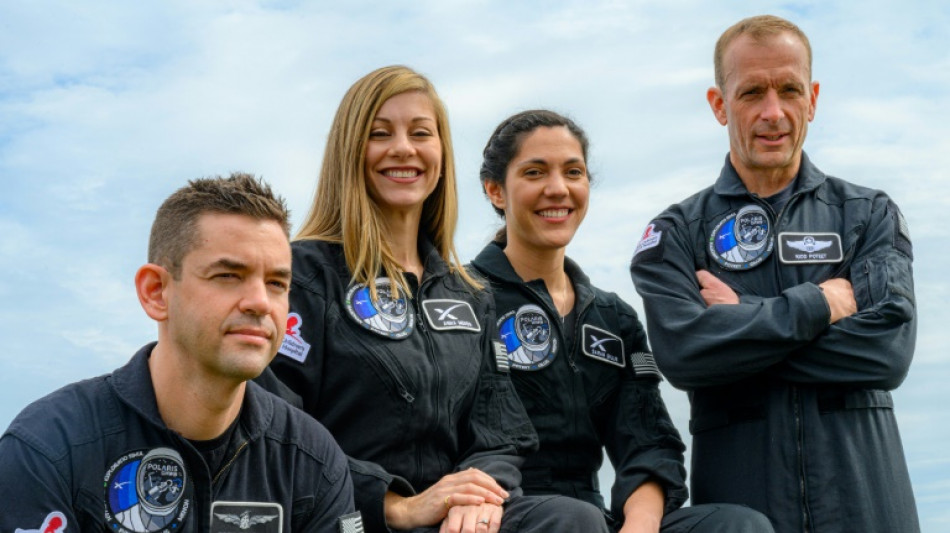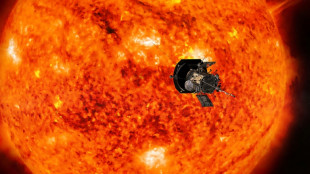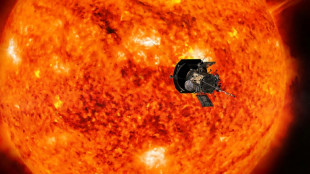

US billionaire announces three more ambitious SpaceX flights
US billionaire Jared Isaacman, who chartered the first all-civilian orbital spaceflight, announced Monday three more private missions with SpaceX -- which will include spacewalking and culminate in the first crewed flight of the next-generation Starship rocket.
The first, named Polaris Dawn, will take place no sooner than the fourth quarter of this year, and will be commanded by Isaacman, the founder of payment processing company Shift4.
The program represents a new step for the commercial space sector, as Elon Musk's SpaceX seeks to carry out more ambitious missions that were until now the domain of national space agencies.
In a press call, Isaacman revealed that the Polaris Program, named after the North Star, will be co-funded by himself and SpaceX. He declined to give further details such as total cost, or the percentage each side would contribute.
It is however widely expected to run into the hundreds of millions of dollars.
"This program has been purposefully designed to advance long duration spaceflight capabilities... guiding us towards the ultimate goal of facilitating Mars exploration," Isaacman told reporters.
He is an experienced pilot who last year led the Inspiration4 mission, which saw four civilian crew complete a three-day orbital mission aboard a SpaceX Dragon, raising $240 million for St. Jude Children's Research Hospital.
For Polaris Dawn, the crew will journey deeper into space than any Dragon has previously flown -- with Isaacman indicating the altitude would be similar to NASA's Project Gemini, the agency's second crewed spaceflight program in the 1960s.
Gemini 11 flew around 850 miles (1370 kilometers) high, which is far deeper into space than more recent missions to the International Space Station, 250 miles high.
But it is still well short of the journey to the Moon during the Apollo-era, which is roughly 239,000 miles -- or 30 Earths back-to-back -- away.
The Polaris Dawn crew will also attempt the first commercial spacewalk, which will require new extravehicular space suits that have yet to be developed.
Since Dragon has no airlock, the whole spacecraft will be exposed to the vacuum of space when the hatch is opened.
The crew will "make sure that everything is secured very well before we open that hatch," mission specialist and medical officer Anna Menon said.
Launching from the Kennedy Space Center in Florida on a Falcon 9 rocket, the spacecraft will spend up to five days in orbit.
The crew's intended altitude will see them enter the inner Van Allen belt, a region of dangerous radiation that protects the Earth from solar wind.
Dragon's hull and the new spacesuits will help protect the crew, who will be measuring radiation exposure throughout, added Menon, a former NASA employee whose husband Anil Menon was selected in the latest cohort of NASA astronaut candidates.
"We had just told our four-year-old son that daddy was going to be an astronaut and our son's first response was, 'Mama, when are you going to be an astronaut?'" she said -- with her invitation to join Isaacman's mission coming just weeks later.
- Starship mission -
The crew includes former US Air Force Colonel Scott Poteet -- an executive at Isaacman's companies Shift4 and private aerospace contractor Draken International -- as its pilot.
Rounding out the quartet is Sarah Gillis, SpaceX's lead space operations engineer, who will assume the role of mission specialist.
During the mission, they will also test laser-based communication in space using SpaceX's Starlink satellite network, and conduct medical research such as studying decompression sickness, the impacts of space radiation and the effects of spaceflight on eye health.
The last of the three missions will involve a SpaceX Starship rocket, which when complete will be the biggest and most powerful spacecraft ever built.
Musk sees the vessel as key to fulfilling his vision of colonizing Mars, while a version has been contracted by NASA as a lunar lander for the Artemis program, which is set to return humans to the Moon around the middle of this decade.
F.Enfield--MC-UK




